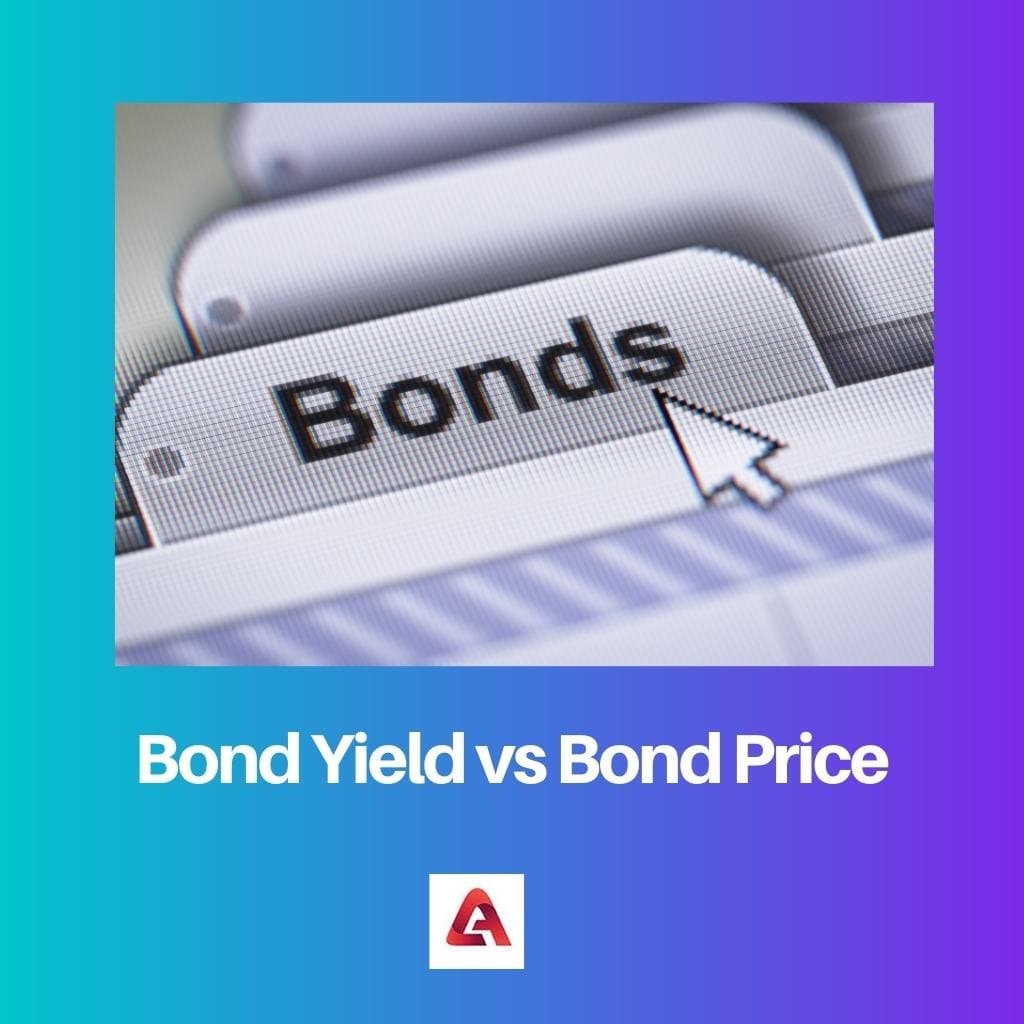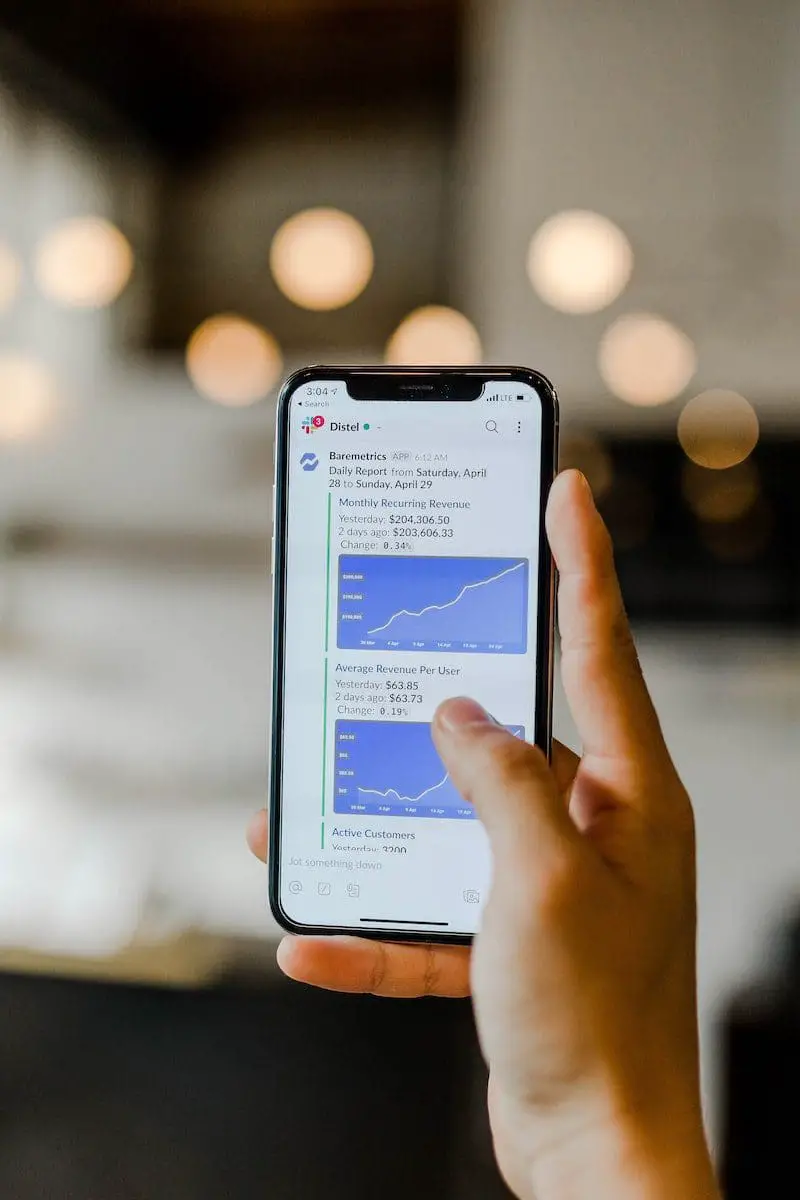Bonds are part of or, say, a unit of corporate securities securitized as tradable assets. Bonds are issued by corporations and are considered fixed-income instruments.
Four types of Bonds are mainly surfacing in the market: Corporate Bonds, Municipal Bonds, Government Bonds, and Agency Bonds. Corporate bonds are those that a company issues. State municipalities have the authority to issue Municipal bonds.
The U.S. Treasury issues Government bonds. There are three types: Bills, Notes, and Bonds, based on their maturity duration.
Agency Bonds are those bonds that a Government-affiliated organization issues.
Key Takeaways
- Bond yield is the return on investment generated by a bond, while the bond price is the market value of a bond.
- Bond yield and price are inversely related, meaning bond yields decrease when bond prices increase and vice versa.
- The bond yield is a percentage, while the bond price is in dollars and cents.
Bond Yield vs Bond Price
Bond yield is the return an investor will earn based on the bond’s coupon rate and current market price. It is expressed as a percentage of the bond’s face value. The bond price is the amount an investor pays to purchase a bond. It can fluctuate based on the bond issuer’s interest rate and credit rating. Bond yield and price have an inverse relationship, meaning when the bond price goes up; the bond yield goes down, and vice versa.

Bond yield is also expressed as yield to maturity, which is the total return on the investment on the bond if the investment on the bond is kept till its actual maturity period and all the coupons are received on time and re-invested in the bond at the same interest rate as that of the bond.
It is expressed in percentage terms.
Bond price is the monetary value of the bond that an investor will receive at the end of the maturity term of investment on the Bond. It incorporates coupons as well as capital investment. It varies greatly and is expressed in terms of the percentage of face value.
Comparison Table
| Parameters of Comparison | Bond Yield | Bond Price |
|---|---|---|
| Meaning | It is the interest rate on an invested bond and can vary differently. | It is the valuation of a bond in monetary terms. |
| Formula | Yield= (bond interest/ bond price)*100 | Bond Price = ∑(Cn / (1+YTM)n )+ P / (1+i)n n= Maturity term YTM= yield to maturity C=Coupon payment P= Par value of the bond i= Interest rate |
| Relationship | Inversely dependent on the Bond price | Inversely dependent on Bond yield |
| Mutual relationship | It depends on bond price and inversely changes itself to balance the interest rates. | It depends on bond yield and inversely changes itself to balance the interest rates as they do not change. |
| Vitality | A bond yield is a must for every bond as it describes the returns. | Bond price is essential for a bond to describe its evaluation. |
What is Bond Yield?
Bond yield can be defined as the function of the annual percentage and the return on a specific bond invested. So, if the Bond yield is 10% on the investment, it will give an average of 10% return on the investment.
Bonds, when mature, can be sold in the open market at a reasonable price which fluctuates daily.
The formulae for bond yield calculation are:
Current yield= (annual interest/bond price)*100
Yield is inversely proportional to the bond price. Regardless of the bond price, the coupon always stays the same. Investors also refer to bond yield as yield to maturity(YTM). It is the overall sum of all the interest payments received by the investor and the profit or loss that occurred.
Yield to maturity somehow helps compare different types of maturities and coupons. It involves a complex calculation and includes factors such as the bond’s coupon rate, bond price, time remaining for maturity, face value, and the bond price difference.

What is Bond Price?
The bond price is the monetary value of a bond paid by an investor to acquire the bond. It is expressed as a percentage of the face value of the bonds. Bond prices change daily by the market and the interest rates.
If the interest rate hikes after the purchase of the bonds, the bond price of those bonds decreases as the new bonds with a higher coupon rate are likely to be issued. A high-interest rate indicates a decrease in the price of existing bonds.
However, the bond price of the existing bonds increases if there is a decrease in the interest rates. This indicates that the investors can profit by selling the bond at a higher price than when it was purchased.

Main Differences Between Bond Yield and Bond Price
- Bond yield has an inverse relationship with the bond price. As the price increases, the yield decreases, and vice-versa.
- The change in bond yield affects the bond price and vice versa. If the bond yield rises, the price has to decrease to balance the interest rates.
- Bond yield is the return or monetary benefit or loss on an investment, whereas the bond price is the monetary value of a bond.
- While the yield is one of the significant factors the investor considers while calculating the return, the bond price is seen to check how much the investor can invest.
- The bond yield is a percentage value, while the bond price is monetary. E.g., the yield value of a bond is 4%, while its price is Rs.1000. it means the return on this investment will be Rs.40.



